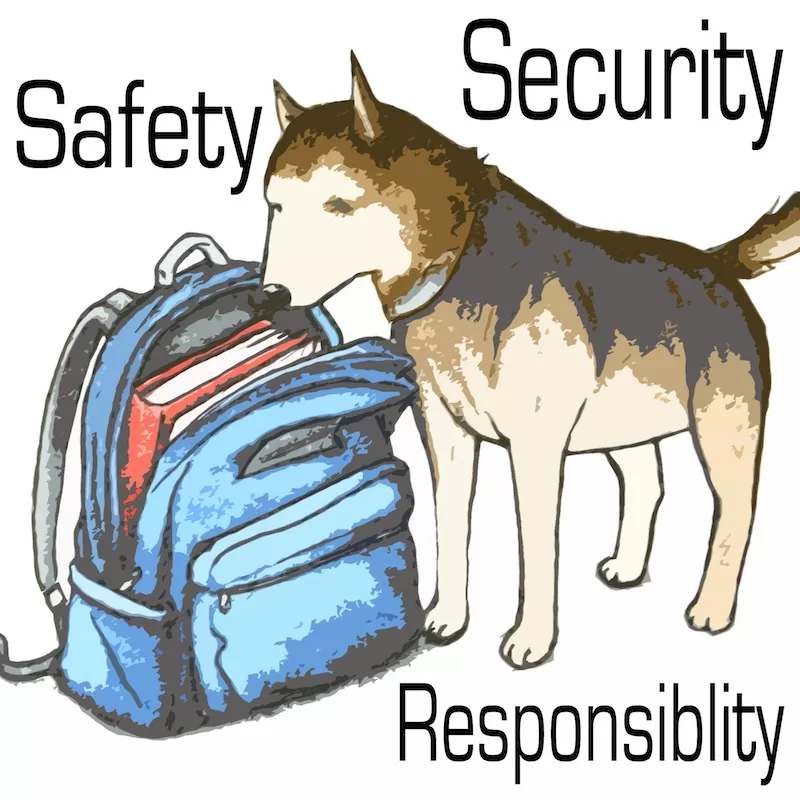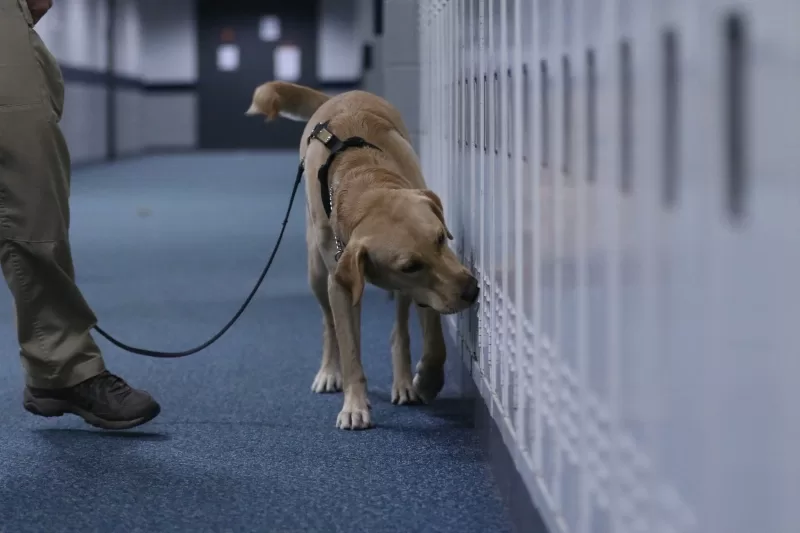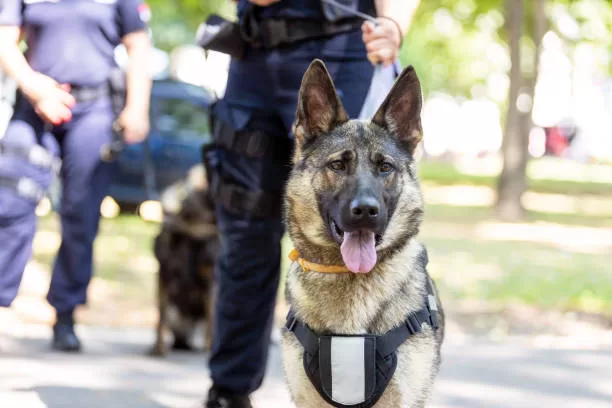27 February 2024 – Johannesburg: South Africa continues to grapple with a concerning epidemic of substance abuse and addiction among young people. Alcohol use is increasing and there is a surge in illicit drugs infiltrating school grounds. Incidents such as the one late last year at Pulamadibogo Primary School in Soshanguve where students reported adverse effects after consuming space cookies containing marijuana, highlight the urgency of the issue.
Trained and specialised K9 dogs could be a plausible solution to address these challenges with their 91% accuracy rate.
A recent survey by the South African Anxiety and Depression Group (SADAG) indicated that, on average, individuals in the country become addicted to drugs at the age of 12, with 50% of teenagers consuming alcohol. The problem goes beyond the use of cannabis, alcohol, and tobacco. The SA National Youth Risk Behaviour Survey (YRBS) reports that 15% of children admitted to using over-the-counter drugs to achieve a high. Easily accessible substances like cough syrup, glue, and whoonga – a mixture of low-grade heroin and additives – are widely used by children in vulnerable communities due to their affordability.

George Fitzroy, managing director at Servest Security says, the introduction of K9 units in schools can combat the rising challenge of substance abuse and can be a proactive approach to ensure a safer and healthier educational environment for students, staff, and teachers. “Their heightened senses enable them to safeguard against harmful and illicit substances, providing a crucial layer of security in schools,” he says.
Fitzroy emphasises that K9 drug detection can significantly reduce drug use in schools and higher learning institutions, if not eliminate it. These dogs have proven accuracy, they are efficient and act as a deterrent. Their depolyment is non-invasive and it supports early intervention. There are legal compliance benefits to their use that can be help in addressing substance abuse in education facilities.
“This proactive approach not only helps minimise the sale and use of illegal substances on school property but also creates a sense of apprehension among students regarding drug possession. Regular searches act as effective deterrents,” says Fitzroy.
Fitzroy highlights that the primary goal of introducing K9s into schools is to ensure early detection of drug use and prevent security threats.
“It is a versatile way to ensure the safety and security of students. The exceptional olfactory abilities, stamina, agility, and adaptability of these dogs, make them ideal for tasks such as detecting drugs, explosives, and even human remains,” he says.

Dogs can be used for more than enhancing safety from illegal substances, Fitzroy notes that another dimension of K9 dogs’ role is providing emotional support and assistance to individuals with disabilities. They can be specifically trained for tasks such as guiding students, retrieving dropped items, and offering comfort during stressful situations. These dogs can play a vital role in assisting students with the physical, mental, or emotional challenges related to different forms of disability.
Given some of the sensitivities associated with the deployment of K9s in schools, some key considerations should, however, be made.
Firstly, effective communication and collaboration between students and staff are paramount. Understanding the school’s culture and the community’s perception of dogs, addressing concerns about allergies, fear, and distractions, and assuming liability for potential incidents are crucial aspects to consider, Fitzroy points out.
To counter potential negative perceptions and privacy concerns, Fitzroy recommends that schools should openly communicate with students to create an understanding that the deployment of these K9 searches is to enhance safety, not cast suspicion on individuals.
“It should be understood by parents and learners that the deployment of K9s is for the well-being of the entire school community and fostering partnership with students, teachers, and parents can create a safe school environment for all,” he says.
While K9s contribute to school security, schools should carefully assess both benefits and drawbacks over time, evaluate their impact on crime, violence, and substance use, and assess overall community responses.

Within the context of the challenges that schools are currently dealing with, creating a safer environment for all students remains crucial, and such solutions can help resolve some of these challenges.





























